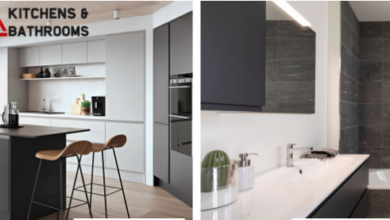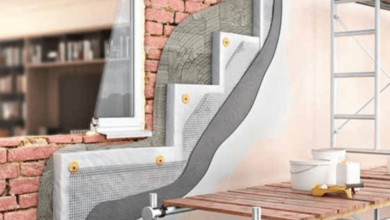How to Blend Modern Elements with Classic Kitchen Architecture

Combining modern aesthetics with traditional kitchen architecture requires more than just mixing finishes; it’s about creating a space that respects the past while embracing present-day function and style. Whether you’re renovating a heritage home or refreshing an outdated layout, a thoughtful approach ensures cohesion. Homeowners exploring kitchen remodeling in Hinsdale can benefit from designs that integrate contemporary conveniences while preserving classic elegance, resulting in a kitchen that is both timeless and relevant.
Respecting the Architectural Framework
Every classic kitchen begins with architectural character: coffered ceilings, crown moldings, arched doorways, or paneled cabinetry. Rather than removing these features, modern remodeling strategies aim to enhance them. By preserving defining elements such as wainscoting or original hardwood floors, the space retains its historic charm.
Modern appliances and lighting fixtures can be introduced in ways that complement, rather than compete with, the traditional framework. For example, installing sleek, matte-finish appliances against raised-panel cabinetry allows both eras to coexist without visual conflict.
Before beginning a renovation, it’s better to understand the things to know before your kitchen remodel. Many homeowners underestimate the importance of blending new design elements with existing architectural details. Planning for compatibility between modern features and original structures avoids costly rework and preserves the kitchen’s authentic character, ensuring a seamless transformation that respects both style and history.
See also: What to Expect from a Pet Waste Removal Service: Key Features and Benefits
Introducing Contemporary Finishes Thoughtfully
Blending new finishes into an old-world kitchen demands restraint. Stainless steel or brushed brass hardware can sit elegantly atop vintage-style cabinetry. Likewise, quartz countertops with subtle veining mirror the elegance of marble but offer modern durability.
Open shelving in wood tones can replace select upper cabinets to create visual relief and offer a modern touch, while still maintaining the symmetry often found in traditional kitchens. Mixed-material islands; wood bases with stone tops; can also bridge the design gap effectively.
Contemporary backsplash designs in subdued palettes, such as elongated subway tile or zellige tile, can modernize the space while respecting traditional lines. It’s not about contrast for the sake of difference, but about complementary materials that unify old and new.
Updating Layouts Without Sacrificing Character
Functionality is central to modern living, and kitchen layouts must reflect that. Traditional kitchens often lean toward compartmentalization, whereas modern preferences favor open concepts. A skilled remodeling plan can reconfigure the space without erasing its roots.
Expanding sightlines, widening doorways, or repositioning islands can improve flow while maintaining architectural integrity. Features like hidden storage solutions, integrated appliances, or under-cabinet lighting introduce convenience without overwhelming the space.
When evaluating questions to ask before hiring a kitchen remodeling contractor, it’s clear that layout experience matters. Professionals who understand how to preserve architectural context while delivering performance-based upgrades are essential to executing a cohesive vision.
Elevating Lighting and Technology Integration
Lighting is where modern updates can shine; both literally and figuratively. Recessed lighting, LED under-cabinet strips, and smart light controls can all be integrated into a classically styled kitchen without disrupting the design language.
Statement pendant lights in clean metal or glass can contrast beautifully with wood textures or vintage tiles, adding focal points that modernize the environment while remaining respectful of its structure.
Beyond lighting, technology can be woven discreetly into the space. Built-in charging drawers, smart ovens, or touchless faucets bring efficiency and convenience without disrupting the kitchen’s historic character.
Conclusion
Blending modern elements with classic kitchen architecture is a nuanced process rooted in balance and intention. By preserving timeless design features while selectively integrating sleek finishes, advanced appliances, and improved layouts, homeowners achieve a kitchen that honors tradition while embracing innovation. For those considering kitchen remodeling, a professional approach ensures that the final result is a harmonious blend of past and present; designed to function beautifully for years to come.





